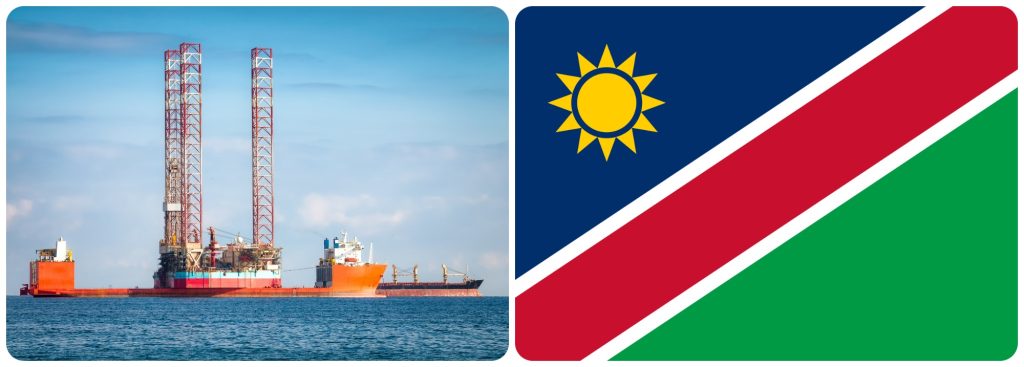Namibia is in a narrow window between discovery and decision. TotalEnergies has asked to extend its exploration license and has already signaled a smaller Venus development, with final investment decision now discussed for 2026. That moves us from big headlines to unglamorous execution: ports, people, permits. If we get those right over the next year, the investment case strengthens. If not, capital that is already mobile will drift somewhere else – Guyana, Brazil or Nigeria.
Start with logistics. Namibia needs a serviceable, phased plan for Lüderitz and a sensible overflow role for Walvis Bay. Instead, the market saw Namport pause southern-harbor upgrades to “clarify scope” and cancel a Lüderitz supply-base tender days after launch. That injects uncertainty into drilling schedules where rig days and marine spreads cost real money. The fix is not a megaproject. It is modular delivery tied to actual rig activity, such as quay length, lay-down, bunkering, and waste handling, that is commissioned in tranches with clear go/no-go gates. Publish a simple 12-month build schedule co-signed by Namport and all the relevant Ministries (Works, Finance and Industries, Mines & Energy), and ring-fence port user charges from Orange Basin activity to repay works. These moves are reversible and protect downside if activity slows.
Investors should meet government halfway. Minimum-throughput and take-or-pay commitments can underwrite the first phase. Operators can synchronize rig sequences to smooth peaks and co-fund common-user assets that reduce everybody’s costs. Baker Hughes’ move to establish a Walvis Bay drilling-fluids base shows how targeted, shared infrastructure can de-risk timelines. It also reminds us that practical bottlenecks—mud, storage, maintenance—matter more than glossy port drawings. Publish quarterly schedule-certainty metrics to make performance visible.
Second, local content. The draft National Upstream Petroleum Local Content Policy sets the right direction, but intent needs teeth. Three design choices will determine whether we get real capability transfer or box-ticking. First, set transparent, phased targets by service category such as logistics, catering, HSE, fabrication. These targets are to be reviewed annually against supplier capacity. Second, require a modest training levy (for example, 1% of contract value) channeled to accredited centers, audited independently. Third, enforce prompt-payment standards for SMEs—say, 15 days—with penalties for late settlement. Pair this with a live supplier register and public spend dashboards by category. For operators, the ask is simple: pre-announce procurement six to twelve months ahead, split packages to fit SME balance sheets, and second engineers into Namibian firms with dual KPIs, namely safety and skills transfer. These steps cost little now and prevent friction later when the basin scales.
Build the minimum we truly need; codify local content that actually transfers capability; and run permitting at speed with legitimacy
Third, permitting. South Africa’s courts have shown how fragile projects become when environmental processes are thin. In August 2025, the Western Cape High Court set aside an environmental authorization for offshore Block 5/6/7; this month Shell and the government sought leave to appeal. Whatever the outcome, the lesson for Namibia is to build legitimacy into the timetable: cumulative impact assessments along the southern coast, rigorous oil-spill modelling including transboundary scenarios, and funded independent review capacity so regulators can keep pace with submissions. Establish a single-window desk for Orange Basin approvals with statutory service-level agreements, and publish monthly dashboards of decisions taken. Speed and scrutiny are not opposites; done right, they reinforce each other and lower litigation risk.
Capital is watching our signal. Galp is marketing a 40% stake in Mopane and aims to finalise a partnership by year-end. That is both validation and a reminder that portfolios rotate fast. Clear, credible delivery on ports, local content and permitting reduces the country risk premium investors price into Orange Basin projects. Drift raises it.
Mind the base rates. The International Energy Agency estimates that, in recent years, new conventional upstream projects have taken close to 20 years on average from licence award to first production, with five years to discovery, around eight for appraisal and approval, and six for construction. There are quicker tie-back exceptions, but new hubs rarely sprint. Our ambition should be disciplined: build only what is needed for appraisal and early development now; leave option value for scale-up post-FID. That respects our constraints—people, cash, clock, and complexity—and avoids the “risk of ruin” that comes with over-build.
Macroeconomics reinforce the case for restraint with focus. Government has just trimmed the 2025 growth forecast to 3.3%, down from 4.5% in March. In that context, the Orange Basin is not a silver bullet; it is a credibility test. Deliver a few visible, bankable steps in the next six to nine months and we convert promise into jobs and tax. Miss them and skepticism about execution grows, raising costs for everyone.
What does success look like by mid-2026? Lüderitz Phase 1 operating with extended berth, lay-down and night operations; a one-stop permitting desk hitting published timelines; supplier-development cohorts running against a live procurement schedule; and operators reporting local-spend and payment discipline alongside safety performance. None of this is flashy. All of it is doable within existing budgets and institutions if we prioritize and coordinate.
The choice is between narrative and navigation. We can celebrate “frontier basin” status while confusing the market with paused tenders and fuzzy scopes. Or we can move in tight, reversible steps that keep late-2026 FID credible: build the minimum we truly need; codify local content that actually transfers capability; and run permitting at speed with legitimacy. Investors will respond to proof, not promises. Policymakers can set the cadence. If both do their part, the Orange basin will move from exciting news to investable reality; on our terms, and on time.
Distributed by APO Group on behalf of African Energy Chamber.

